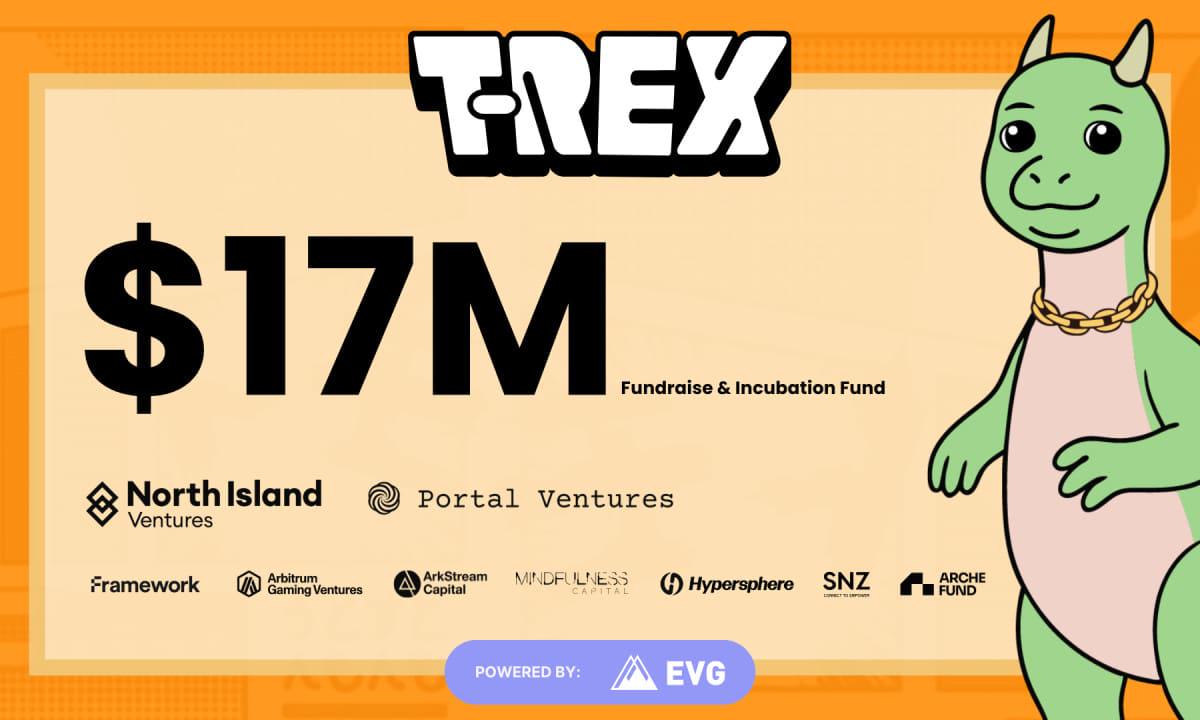The Web3 evolution theory of attention economy, how to activate billions of consumers without feeling on the chain?

Reprinted from panewslab
05/15/2025·24DAuthor: Zen, PANews
Traditional Web2 platforms are usually controlled by centralized companies, and the user-generated data and traffic value is aggregated and commercialized by the platform, and it is difficult for users to obtain value directly from their own content creation or interaction. According to the principle of "decentralization, user ownership and value consensus" emphasized by Web3, the user's attention and content value should be directly controlled by the user.
Focusing on user sovereignty and value allocation, the Web3 industry has already tried many projects, and the Web3 consumer entertainment platform T-Rex is one of them. The project also completed a $17 million Pre-Seed financing recently, and investors include Portal Ventures, Framework Ventures and Arbitrum Gaming Ventures.

Designed for consumer entertainment and content distribution, T‑Rex is developed led by Everest Venture Group (EVG), and is committed to bringing mainstream Internet users and content creators into the Web3 ecosystem. Through the concept of "attention economy", it records users' interactive behaviors on social media and videos on the chain and gives encrypted rewards, aiming to solve the "digital ghost town" phenomenon and "mercenary user" problems in the blockchain ecosystem.
The "attention engine" targeting ordinary consumers
The core goal of T‑Rex is to become the infrastructure of Web3 attention layer: through browser plug-ins (Chrome extensions) to realize the built-in distribution and incentive mechanisms of the Web2 platform and blockchain, allowing users to naturally receive token rewards in their habitual social, video and entertainment environments. The user group T‑Rex is mainly the majority of ordinary consumer-level users, such as netizens who use social entertainment platforms such as YouTube, TikTok, Twitter, etc., as well as content creators, gamers, etc. These groups have high participation in entertainment content.
The T‑Rex technology stack is built with the Nitro engine provided by Arbitrum Orbit, inheriting the advantages of Arbitrum's customizable chain, achieving ultra-high throughput, low latency and extremely low transaction costs to meet consumer-grade applications' demand for immediate response. Its core innovation is the Proof-of-Engagement (PoE) consensus mechanism: the platform secretly captures users' interactive behaviors on commonly used social platforms through browser plug-ins, generates on-chain proofs for likes, videos, and content sharing, and automatically issues points and token rewards. This mechanism focuses on validating and evaluating real user interactions, effectively distinguishing real users from machine behavior.

To enhance user experience, T‑Rex is designed with simplifying processes and lowering thresholds. Users only need to install the T‑Rex browser plug-in to continue browsing on commonly used social media and video sites, all interactions are automatically recorded and instantly redeemed as rewards, without manually creating wallets or understanding encryption technology. The plugin is scheduled to be launched this summer, and it makes users feel like they are using a regular Web2 platform through a familiar interface, while completing Web3 links and reward distribution in the background. The platform also provides developers with comprehensive documentation, APIs and SDKs to simplify the development and access of consumer dApps, and has set up an incubation fund of approximately US$8 million to support ecosystem construction, technical resources and community operations.
In terms of security, T‑Rex introduced zkTLS (zero-knowledge transport layer security) technology to protect data privacy and achieve secure connection between Web2 content data and Web3 reward links. In addition, as a chain built on Ethereum ecosystem technology, T‑Rex inherits Ethereum’s security and extensive compatibility, and can seamlessly integrate with mainstream wallets such as MetaMask and other Ethereum ecosystem protocols, making it easier to cross-chain liquidation of assets and reuse of development tools.
Token incentives ➕ attention economy feasible?
Projects that target users' attention and convert them into crypto rewards have been precedented. Brave browser, which has been online for several years, is a representative of such projects, and is also considered an early explorer of the Web3 attention economy.
Brave launched the Brave Rewards feature for users to choose from in 2019, providing Ethereum-based Basic Attention Token (BAT) rewards. Brave Rewards allows users to selectively watch privacy-protected ads and receive BAT rewards based on views and engagement. Brave takes 30% of user advertising revenue and the remaining 70% is allocated to users. Users can use the obtained BAT to reward websites or content creators, or withdraw cash to crypto wallets such as Uphold and Gemini, or use them for consumption scenarios such as purchasing gift cards.

According to data released by Brave co-founder Brendan Eich recently, as of April 2025, Brave's monthly active users reached 87 million, with about 36 million daily active users, indicating that its market acceptance is still considerable. Brendan said Brave's goal for the year is to achieve 100 million monthly active users.
Although there are similarities in philosophy to T‑Rex, both aiming to transform users’ browsing or interaction behaviors on the Web2 platform into quantifiable token rewards, there are significant differences in business models, technology paths and ecological scope. Brave focuses on “privacy-first advertising incentives”, while T‑Rex expands to all social and content interactions, trying to promote attention incentives in larger consumer-grade applications.
Overall, Brave's user growth, revenue curve and ecological expansion all show that the "attention economy" has considerable prospects in the mainstream consumer market and is widely attractive to the mainstream Web2 population. T‑Rex may be expected to make a breakthrough in the consumer Web3 field by targeting a wider scenario to cover social, video, games, e-commerce and lower usage thresholds.

